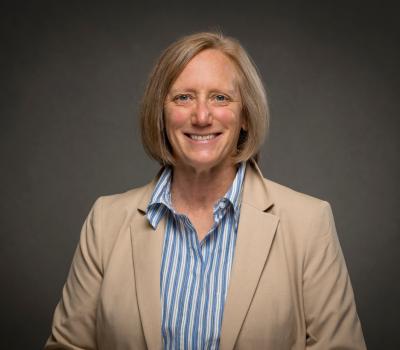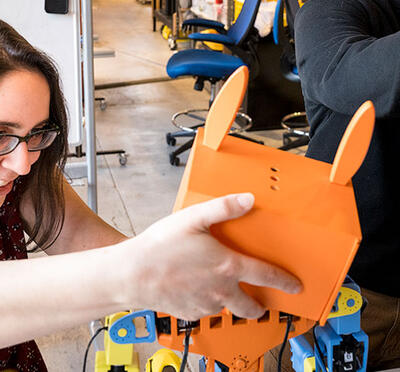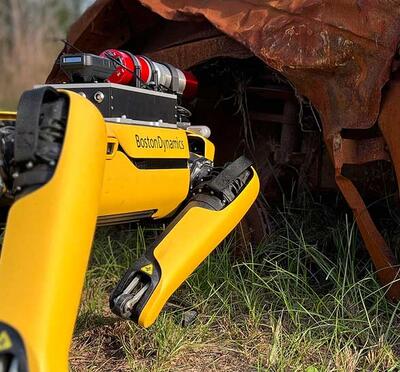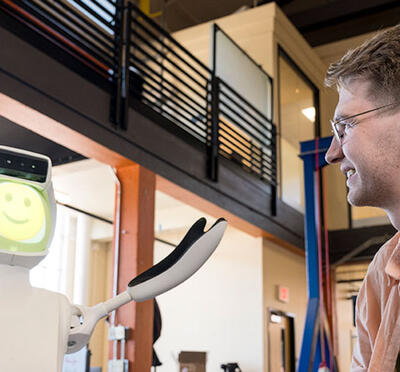A world of opportunities is open to robotics students at Oregon State University for collaborative research across a variety of disciplines, including agriculture, forestry, and oceanography. The well-respected robotics program also benefits from Oregon State’s strength in artificial intelligence. The university was the first in the nation to have an AI doctoral program and is today the only university in the United States to have both robotics and AI doctoral programs. Together, the two programs include 45 faculty and 180 graduate students, making Oregon State a robotics powerhouse. Graduate students are working on a wide variety of research projects including marine robots, robot assistants, agricultural robots, unmanned aerial vehicles, and humanoid robots.
Four-legged robots explore planetary surfaces
Ian Rankin, a Ph.D. student in robotics, is part of a team of scientists and engineers working on a NASA-funded project that is developing a four-legged robot to explore planetary surfaces. A group from four different universities and NASA – including Rankin’s mentor for this project, assistant professor of robotics Cristina Wilson – tested the robot at Mount Hood.
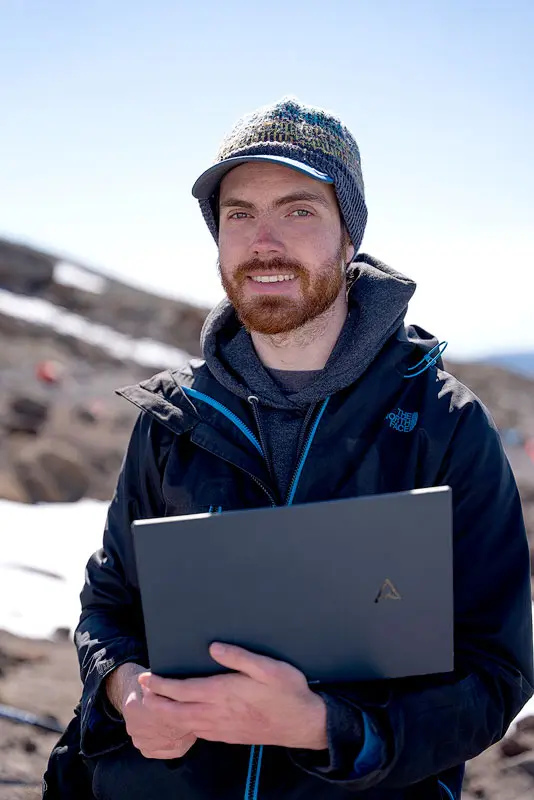
Rankin also works with Geoff Hollinger, professor of robotics, on a project with Oregon State oceanographers to develop algorithms for autonomous robots.
“My work is based around trying to get scientists and robots to work together as best as possible,” Rankin said.

Blueberry-pruning robots
A collaboration with a local blueberry farm helped Ph.D. robotics student Chelse VanAtter collect data about the physics of blueberry plants. The data will be used to create digital plant models that researchers will use with software simulations to train blueberry-pruning robots.
“My favorite part about being out here has been seeing all of the things I've built and all the code I've spent hours working on interacting with the plants in the way that I had predicted,” said VanAtter, who is advised by Joe Davidson, associate professor of robotics and mechanical engineering.
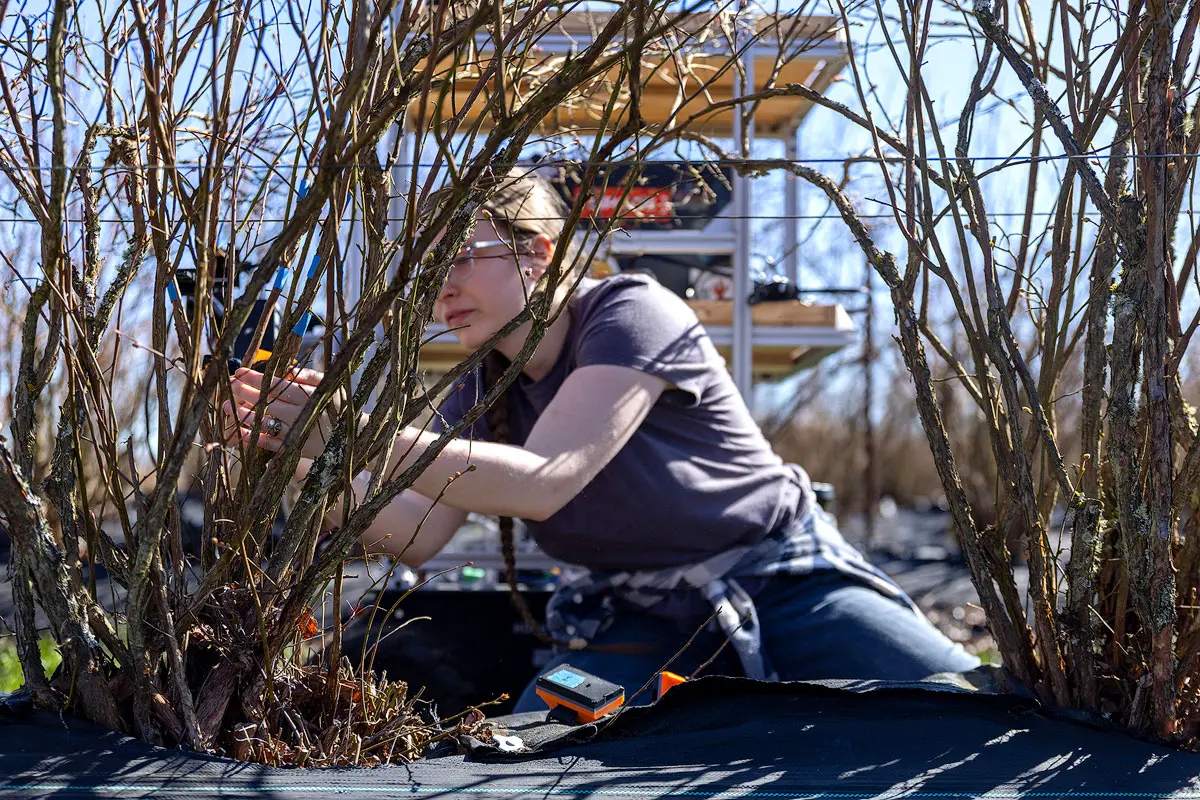
Robots for aerial search and rescue
For his master’s thesis, Nathan Schomer, M.S. robotics ’24, developed a technique to improve mountain search and rescue. Currently, unmanned aerial vehicles lack the advanced autonomy necessary for an aerial search covering a wide area. Advised by Julie A. Adams, professor of computer science and robotics, Schomer devised a coverage path planning algorithm to improve the operation of UAVs for the challenging conditions of mountain rescue operations. Nathan is currently working for Glidance, a robotics startup developing a personal robot to help blind and low-vision people navigate the world.

At Oregon State we are building robots that can help improve human lives. To accomplish that goal we collaborate with other universities through organizations like the AI Caring Institute, which aims to improve the quality of life for older adults, and the AgAID Institute, which takes on global agricultural challenges with AI solutions. The robotics program is based on a three-pronged vision encompassing education, research, and social impact. Underpinning everything is a spirit of collaboration.
“My experience has been great,” VanAtter said of the robotics program. “There's a really good sense of community and collaboration and I really love that.”

